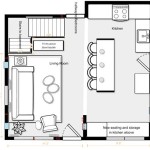Essential Aspects of Hangar Building Plans: A Comprehensive Guide
Building a hangar is a significant investment, and it's crucial to have a well-defined plan to ensure the structure meets your specific needs and complies with safety regulations. Here are the essential aspects you should consider when creating hangar building plans:
1. Site Assessment and Zoning Requirements
Before designing your hangar, it's essential to thoroughly assess the site where it will be built. Factors to consider include soil conditions, drainage, access to utilities, proximity to runways, and any zoning restrictions that may impact the size and design of the hangar.
2. Size and Dimensions
The size of your hangar will depend on the number and type of aircraft it will accommodate. Consider the wingspan, fuselage length, and height of the aircraft you own or plan to acquire. Allow for ample space for maneuvering, maintenance, and storage of equipment.
3. Door Type and Location
The type and location of the hangar door are critical factors. Bifold doors or sliding doors are common options that provide wide access to the hangar. The placement of the door should ensure proper airflow, ventilation, and access to the runway.
4. Structural Design and Materials
The structural design of the hangar must withstand various loads, including wind, snow, and aircraft impact. The choice of materials, such as steel, aluminum, or fabric, will affect the durability, cost, and maintenance requirements of the hangar.
5. Ventilation and Climate Control
Proper ventilation is essential to maintain air quality and prevent moisture buildup in the hangar. Consider installing exhaust fans, intake vents, and circulation systems to provide fresh air and prevent condensation. Climate control systems may also be necessary to regulate temperature and humidity levels.
6. Lighting and Safety Features
Aircraft maintenance and operations require adequate lighting. Provide ample natural and artificial lighting throughout the hangar. Safety features, such as fire detection and suppression systems, smoke detectors, and emergency exits, should also be incorporated into the design.
7. Engineering and Approval
Once the plans are complete, they should be reviewed and approved by an engineer licensed in your jurisdiction. The engineer will ensure the plans meet building codes, zoning regulations, and safety standards. Obtain necessary permits before commencing construction.
Conclusion
Creating comprehensive hangar building plans is crucial to ensure a functional, safe, and code-compliant structure. By considering the essential aspects outlined above, you can develop a plan that meets your specific requirements and allows you to operate your aircraft efficiently and safely.

Pin Page

Susitna Hangar Home

Hangar Home Designer Residential Structural Architectural Engineer

Airplane Hangar Plan Dwg

Hangar Home Designer Residential Structural Architectural Engineer

Ochoco Air Hangar Tva Architects Archdaily

8 Tips For Aircraft Hangar Design And Construction In 2024

Greenville Hangar Plans Doors Made In Usa

Hangar Home Designer Residential Structural Architectural Engineer

Aircraft Maintenance Hangar Plan Cad Template Dwg Templates








